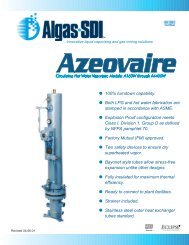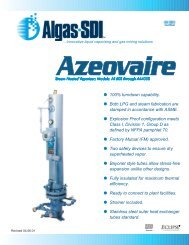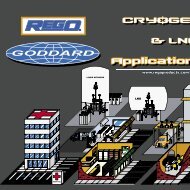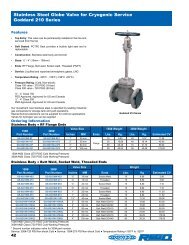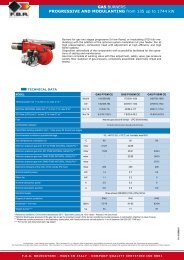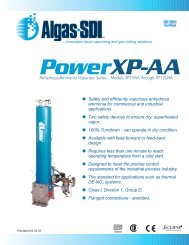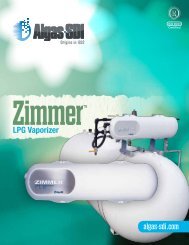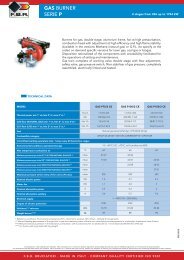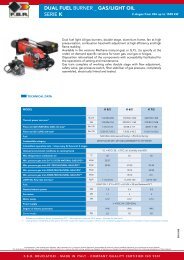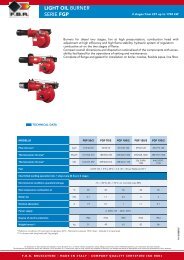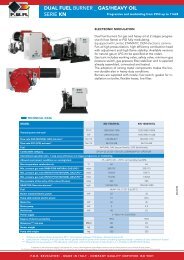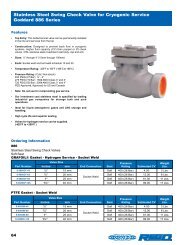LP-Gas Serviceman’s Manual
LP-Gas Serviceman's Manual - cecogas
LP-Gas Serviceman's Manual - cecogas
- No tags were found...
Create successful ePaper yourself
Turn your PDF publications into a flip-book with our unique Google optimized e-Paper software.
Installation Planning<br />
Propane Storage Vessels<br />
The withdrawal of propane vapor from a vessel lowers the<br />
contained pressure. This causes the liquid to “boil” in an<br />
effort to restore the pressure by generating vapor to replace<br />
that which was withdrawn. The required “latent heat of<br />
vaporization” is surrendered by the liquid and causes the<br />
temperature of the liquid to drop as a result of the heat so<br />
expended.<br />
The heat lost due to the vaporization of the liquid is replaced<br />
by the heat in the air surrounding the container. This heat<br />
is transferred from the air through the metal surface of<br />
the vessel into the liquid. The area of the vessel in contact<br />
with vapor is not considered because the heat absorbed<br />
by the vapor is negligible. The surface area of the vessel<br />
that is bathed in liquid is known as the “wetted surface.”<br />
The greater this wetted surface, or in other words the<br />
greater the amount of liquid in the vessel, the greater the<br />
vaporization capacity of the system. A larger container<br />
would have a larger wetted surface area and therefore would<br />
have greater vaporizing capacity. If the liquid in the vessel<br />
receives heat for vaporization from the outside air, the higher<br />
the outside air temperature, the higher the vaporization rate<br />
of the system. How all this affects the vaporization rate of<br />
100-pound cylinders is shown on page 7. It will be noted<br />
from this chart that the worst conditions for vaporization rate<br />
are when the container has a small amount of liquid in it and<br />
the outside air temperature is low.<br />
With the principles stated above in mind, simple formulae<br />
for determining the proper number of DOT cylinders and<br />
proper size of ASME storage containers for various loads<br />
where temperatures may reach 0ºF will be found on pages 7<br />
and 8 respectively.<br />
5



